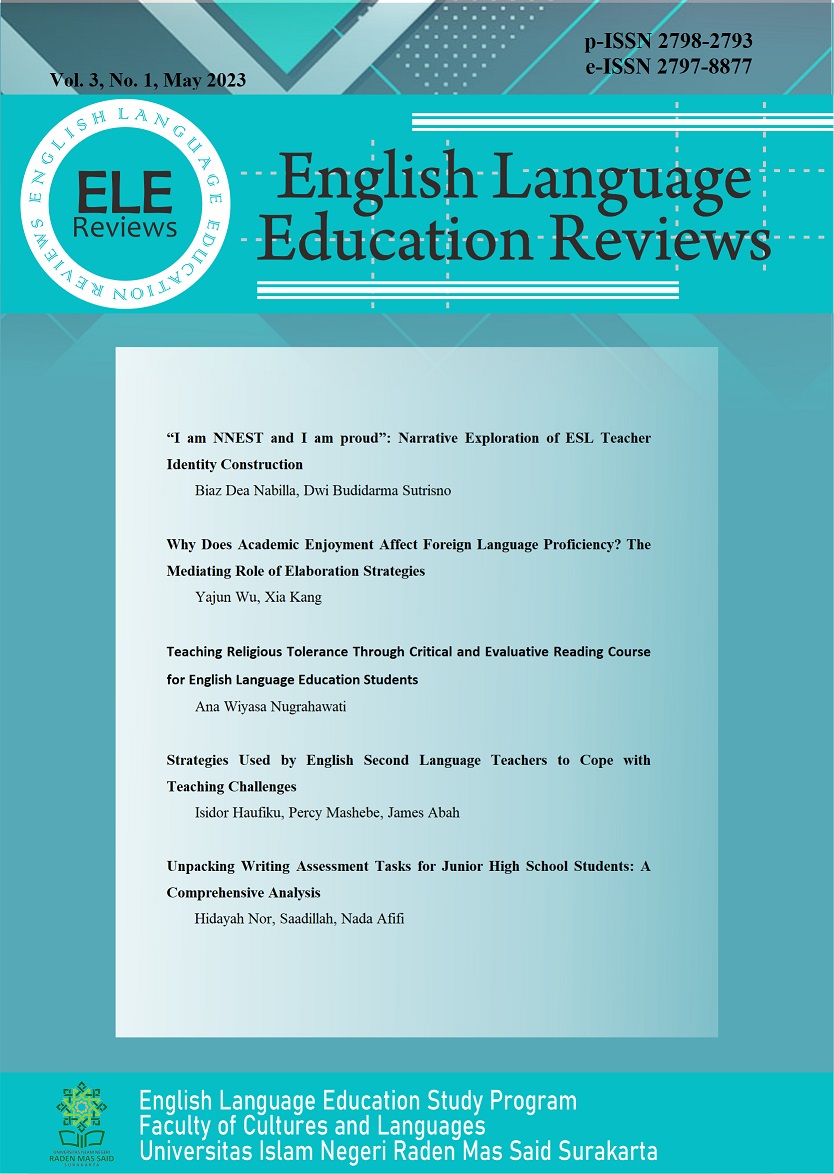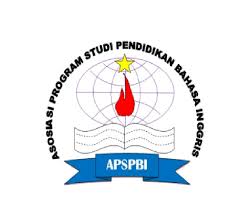Teaching Religious Tolerance Through Critical and Evaluative Reading Course for English Language Education Students
DOI:
https://doi.org/10.22515/elereviews.v3i1.6611Keywords:
critical and evaluative reading, English teaching, religious toleranceAbstract
Religious tolerance is crucial for bridging a good intercultural interaction among people from different religious backgrounds. In the context of teaching, the critical and evaluative reading course is one of the courses that can facilitate students to foster their religious tolerance. This research aims to investigate the implementation of critical and evaluative reading course in building students’ religious tolerance. Taking the case at UIN Raden Mas Said, this descriptive research collected the data through interviews, observation, and document analysis. The findings showed that the fundamental aspects for practicing reading comprehension in critical and evaluative reading course are multimodal text materials addressing religious, cultural, and value practices and beliefs taken from various media, printed or online. The teaching strategy was reading to learn to help students build critical thinking. The students were able to perform religious tolerance understanding during the study period. It implies religious tolerance can be cultivated through reading courses using multimodal texts that can help students in their daily intercultural interaction practices.
Downloads
References
Afflerbach, P. (1990). The influence of prior knowledge and text genre on readers’ prediction strategies. Journal of Reading Behaviour, 22.
Alderson, C., & Urquhart, A. H. (1984). Introduction: What is reading? In C. Alderson & A. H. Urquhart (Eds.), Reading in a foreign language (pp. 16-28). Longman.
Anderson, B. (1983). Imagined communities: Reflections on the origin and spread of nationalism. Verso.
Anderson, R. C., & Pearson, D. (1984). A schema-thematic view of basic processes in reading comprehension. In P. D. Pearson, R. Barr, M. L. Kamil, & P. Mosenthals (Eds.), Handbook of Reading Research. Longman.
Avery, P. G., Sullivan, J. L., & Wood, S. L. (1997). Teaching for the tolerance of diverse beliefs. Theory into Practice, 36(1), 32-38. https://www.tandfonline.com/doi/abs/10.1080/00405849709543742
Banks, J. A. (2006). Race, culture, and education: The selected works of James A. Banks. Routledge.
Berggren, N., & Nilsson, T. (2015). Globalization and the transmission of social values: The case of tolerance. Journal of Comparative Economics, 43(2), 371-389. https://doi.org/10.1016/j.jce.2015.02.005
Carrell, P.L. (1988). Interactive approaches to second language reading. Cambridge University Press.
Carrell, P. L., & Grabe, W. (2002). Reading. In N. Schmitt (Ed.), An introduction to applied linguistics. Arnold.
Din, M. (2020). Evaluating university students’ critical thinking ability as reflected in their critical reading skill: A study at bachelor level in Pakistan. Thinking Skills and Creativity, 35, 100627. https://doi.org/10.1016/j.tsc.2020.100627
Farhady, H. (1998). Constructing reading comprehension tests. Roshd Foreign Language Teaching Journal, 13(49).
Ferrar, J. W. (1976). The dimensions of tolerance. Pacific Sociological Review, 19(1), 63-81. https://doi.org/10.2307%2F1388742
Hudson, T. (2007). Teaching second language reading. Oxford University Press.
Miftakh, F., & Wachyudi, K. (2020). Teaching tolerance through intercultural English language learning to elementary students. ELT in Focus, 2(2), 41-50. https://doi.org/10.35706/eltinfc.v2i2.3053
Nirwana, N. (2022). The use of thematic reading-based approach in internalizing religious moderation understanding in ELT: Students voice. Attractive: Innovative Education Journal, 4(2), 329-338. http://dx.doi.org/10.51278/aj.v4i1.418
Nirwana, N., & Darmadali, W. S. (2021). Instilling religious moderation value in ELT through cross-cultural understanding course. Elsya Journal of English Language Studies, 3(2), 117-125. https://doi.org/10.31849/elsya.v3i2.6780
Richards, J. C. & Renandya, W. A. (Eds.). (2002). Methodology in language teaching: An anthology of current practice. Cambridge University Press.
Setyono, B., & Widodo, H. P. (2019). The representation of multicultural values in the Indonesian Ministry of Education and culture-endorsed EFL textbook: A critical discourse analysis. Intercultural Education, 30(4), 383-397. https://doi.org/10.1080/14675986.2019.1548102
Sholeh, M. B., Ahsin, N., Alany, Z., & Fatimah, F. (2022). The integration of religious moderation values in English language teaching in madrasah. Proceedings of the International Conference on Madrasah Reform 2021 (ICMR 2021), Indonesia, 633(178-185). https://doi.org/10.2991/assehr.k.220104.027
Sugiyono. (2008). Metode penelitian kuantitatif, kualitatif dan R&D. Alfabeta.
Urquhart, A. H., & Weir, C. J. (1998). Reading in a second language: Process, product and practice. Longman.
Van Dijk, T. A. (2001). 18 Critical discourse analysis. The Handbook of Discourse Analysis, 349-371. https://onlinelibrary.wiley.com/doi/abs/10.1002/9780470753460
Yaghi, E., & Ryan, J. (2022). ‘Because you’re all covered up’: Islamophobia in the ELT classroom. TESOL Quarterly, 56(4), 1345-1368. https://doi.org/10.1002/tesq.3119
Downloads
Published
How to Cite
Issue
Section
Citation Check
License
Copyright (c) 2023 Ana Wiyasa Nugrahawati

This work is licensed under a Creative Commons Attribution-NonCommercial 4.0 International License.
Authors retain copyright and grant the journal right of first publication with the work simultaneously licensed under a Creative Commons Attribution License that allows others to share the work with an acknowledgement of the work's authorship and initial publication in this journal.
This ejournal system and its contents are licensed under
a Creative Commons Attribution-NonCommercial 4.0 International License








